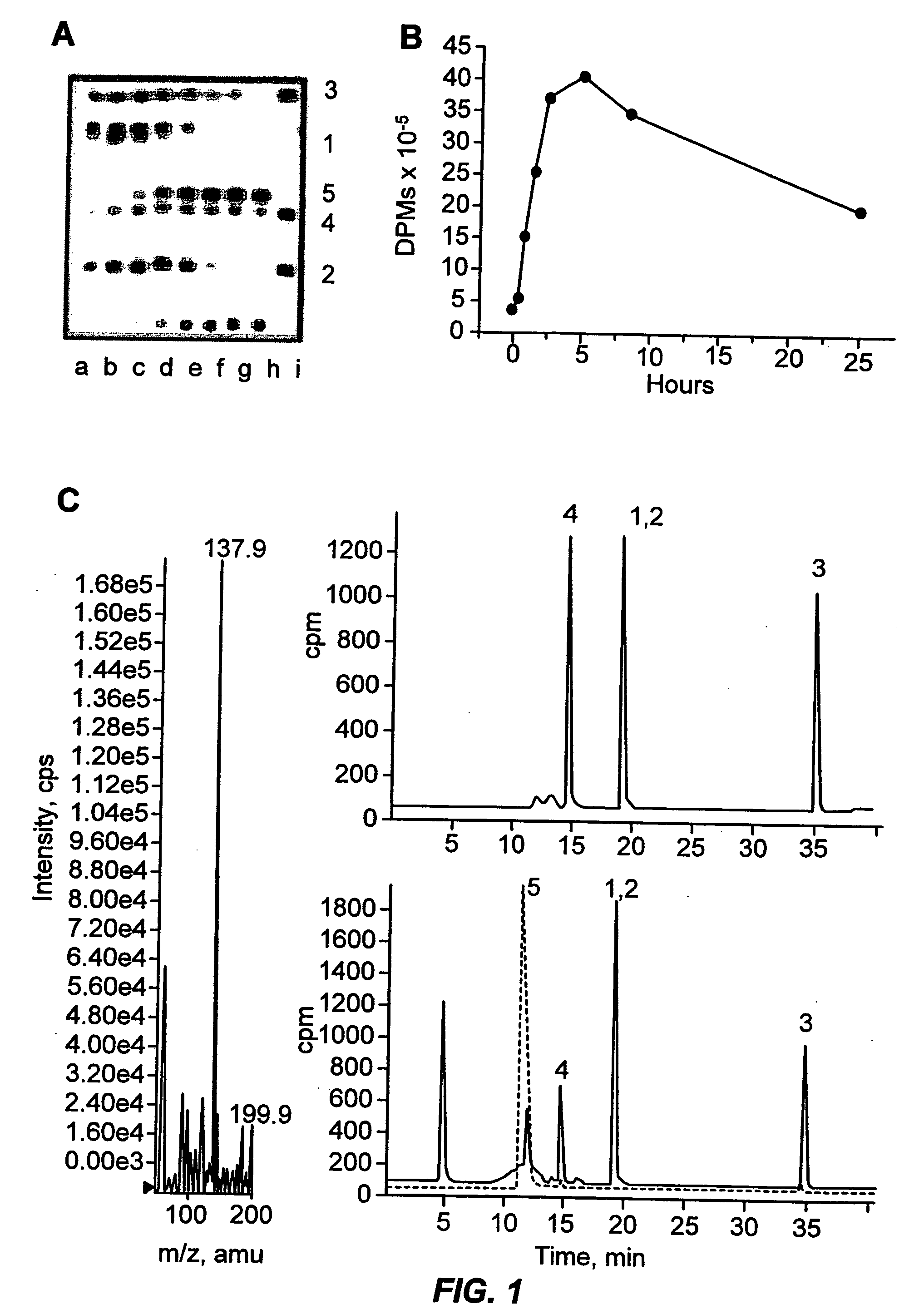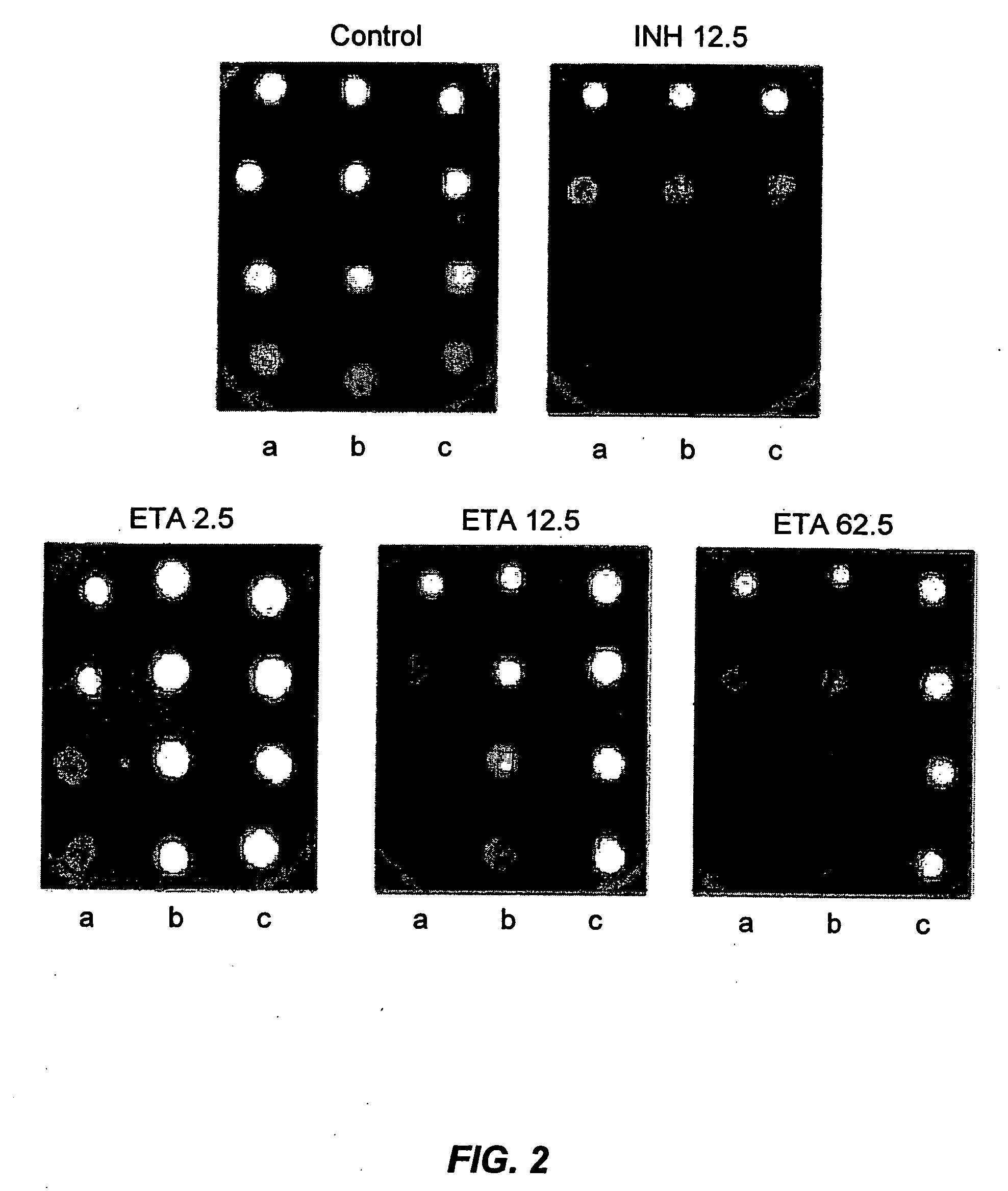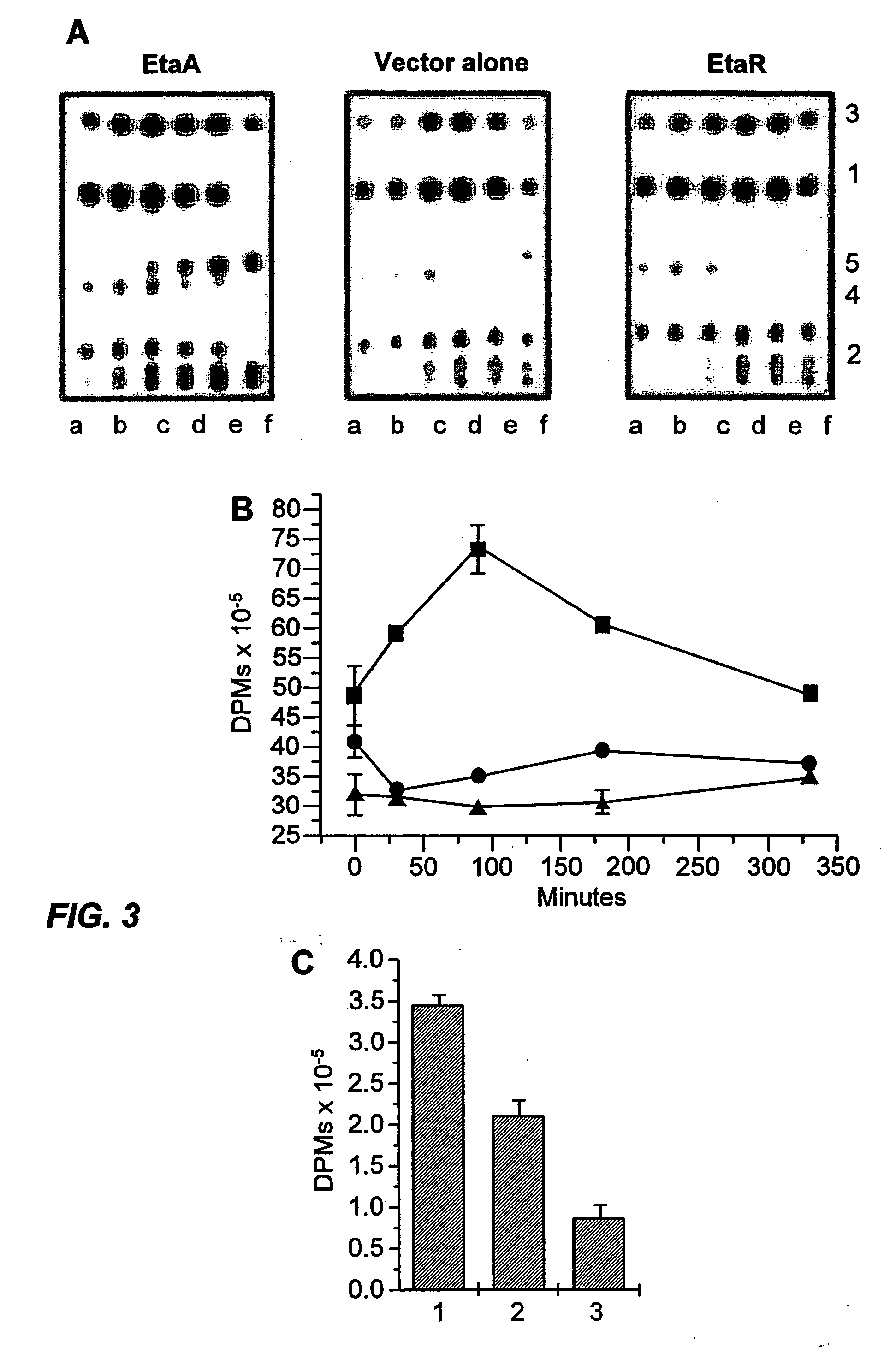Methods of diagnosing multidrug resistant tuberculosis
a multi-drug resistant, tuberculosis technology, applied in the direction of instruments, enzymology, biochemistry apparatus and processes, etc., can solve the problems of inability to determine the function of many putative genes, poor patient resistance to any of the front-line drugs, and inability to achieve the effect of converting eta to metabolite 5 much faster
- Summary
- Abstract
- Description
- Claims
- Application Information
AI Technical Summary
Benefits of technology
Problems solved by technology
Method used
Image
Examples
example 1
Synthesis of 2-ethyl-[14C]thioisonicotinamide (1-[14C]ETA)
[0072] 2-ethylpyridine was converted to its N-oxide salt in almost quantitative yield using 35% hydrogen peroxide in acetic acid and the corresponding N-oxide was subjected to a nitrating mixture of sulfuric and nitric acids to form 2-ethyl-4-nitropyridine N-oxide in 60% yield (Kucherova, et al., Zhurnal Obshchei Khimii 29:915-9 (1959). Reduction using iron filings, hydrochloric, and acetic acid (Gutekunst and Gray, J. Am. Chem Soc., 44:1741 (1922)) allowed us to isolate 2-ethyl-4-aminopyridine, which was converted to 2-ethyl-4-bromopyridine through the perbromide using 50% aqueous hydrobromic acid and sodium nitrite (Kucherova et al., supra). The resulting bromide was heated with copper cyanide in N-methylpyrrolidin-2-one to afford 2-ethyl-4-[14C]cyanopyridine (Lawrie et al., J Labelled Compounds Radiopharmaceutic 36:891-8 (1995)). [14C]-copper cyanide was obtained from [14C]-sodium cyanide (Amersham Pharmacia Biotech, Inc....
example 2
Materials and Methods for Determining in vivo Metabolism of 1-[14C]ETA
[0073] The indicated mycobacterial species were grown in culture to an OD650 of 1.0-1.5 and then concentrated 10-fold in middlebrook 7H9 broth media (DIFCO laboratories, Detroit, Mich.). The culture suspensions were treated with 0.01 μg ml− 1 of [14C]-ETA (55 mCi / mmol) and sequential culture aliquots were removed at the indicated times, filtered and flash frozen. Samples of 2 μl were analyzed by TLC on Silica gel 60 plates (EM Science, Gibbstown, N.J. 08027) developed with 95:5 ethyl acetate:ethanol. Prior to spotting radioactive samples on TLC plates a small amount of unlabeled ETA was spotted to circumvent silica-catalyzed air oxidation of the low concentration radioactive ETA samples.
[0074] Metabolites were identified by comparison with well characterized synthetic standards prepared as follows: the sulfoxide was prepared by hydrogen peroxide oxidation of ETA as previously described (Walter and Curtis, Chem B...
example 3
Cloning of EtaA and EtaR
[0076] Genomic DNA from MTb H37Rv was partially digested with Sau3AI (New England BioLabs, Beverly, Mass.) to give fragments of various sizes. Fragments ranging from 1 Kb to 10 Kb were ligated to pMV206Hyg (Mdluli et al., J Infect Dis 174:1085-90 (1996)) that had been previously linearized with BamHI (New England BioLabs). The ligation mixtures were electroporated into Escherichia coli DH5α (Life Technologies, Grand Island, N.Y.) for amplification of the DNA library which was subsequently purified and electroporated into MTb H37Rv. The resulting transformants were plated on 7H11 (DIFCO) agar plates that contained Hygromycin (Life Technologies, 200 μg ml−1) and the indicated concentrations of ETA. Five colonies were isolated that had MICs for ETA from 2.5 to 5.0 μg / ml (the MIC for wild type MTb is 1.0 μg / ml) (Rist, Adv Tuberc Rec 10:69-126 (1960)).
[0077] EtaA and EtaR were PCR-amplified from H37Rv chromosomal DNA using the following primers 5′-GGGGTACCGACATT...
PUM
| Property | Measurement | Unit |
|---|---|---|
| concentrations | aaaaa | aaaaa |
| concentrations | aaaaa | aaaaa |
| pH | aaaaa | aaaaa |
Abstract
Description
Claims
Application Information
 Login to View More
Login to View More - R&D
- Intellectual Property
- Life Sciences
- Materials
- Tech Scout
- Unparalleled Data Quality
- Higher Quality Content
- 60% Fewer Hallucinations
Browse by: Latest US Patents, China's latest patents, Technical Efficacy Thesaurus, Application Domain, Technology Topic, Popular Technical Reports.
© 2025 PatSnap. All rights reserved.Legal|Privacy policy|Modern Slavery Act Transparency Statement|Sitemap|About US| Contact US: help@patsnap.com



